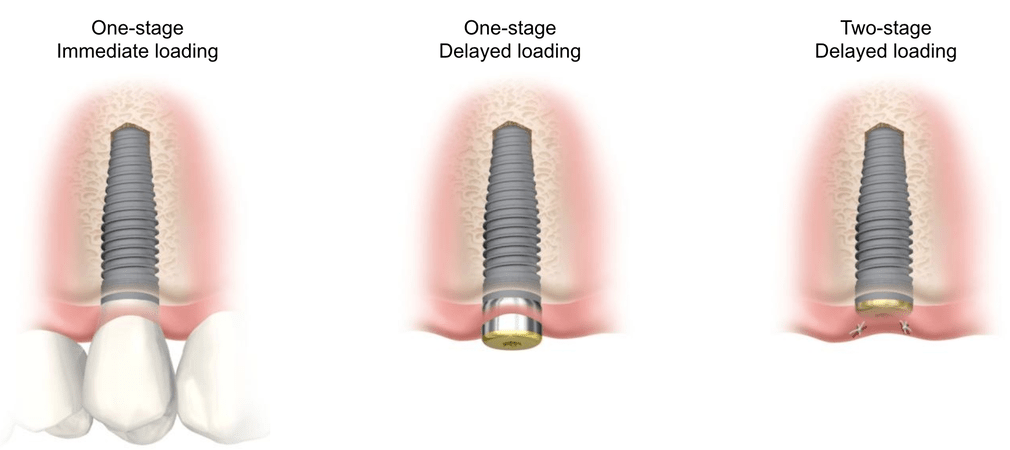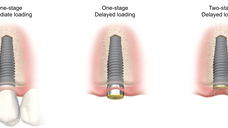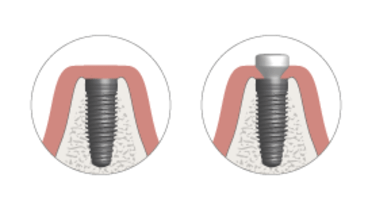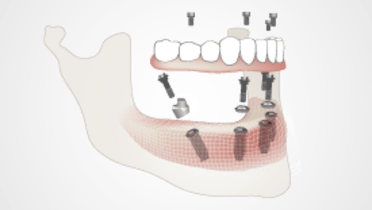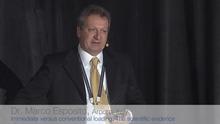-
0
Patient Assessment
- 0.1 Patient demand
- 0.2 Overarching considerations
- 0.3 Local history
- 0.4 Anatomical location
- 0.5 General patient history
-
0.6
Risk assessment & special high risk categories
- 5.1 Risk assessment & special high risk categories
- 5.2 age
- 5.3 Compliance
- 5.4 Smoking
- 5.5 Drug abuse
- 5.6 Recreational drugs and alcohol abuse
- 5.7 Parafunctions
- 5.8 Diabetes
- 5.9 Osteoporosis
- 5.10 Coagulation disorders and anticoagulant therapy
- 5.11 Steroids
- 5.12 Bisphosphonates
- 5.13 BRONJ / ARONJ
- 5.14 Radiotherapy
- 5.15 Risk factors
-
1
Diagnostics
-
1.1
Clinical Assessment
- 0.1 Lip line
- 0.2 Mouth opening
- 0.3 Vertical dimension
- 0.4 Maxillo-mandibular relationship
- 0.5 TMD
- 0.6 Existing prosthesis
- 0.7 Muco-gingival junction
- 0.8 Hyposalivation and Xerostomia
- 1.2 Clinical findings
-
1.3
Clinical diagnostic assessments
- 2.1 Microbiology
- 2.2 Salivary output
-
1.4
Diagnostic imaging
- 3.1 Imaging overview
- 3.2 Intraoral radiographs
- 3.3 Panoramic
- 3.4 CBCT
- 3.5 CT
- 1.5 Diagnostic prosthodontic guides
-
1.1
Clinical Assessment
-
2
Treatment Options
- 2.1 Mucosally-supported
-
2.2
Implant-retained/supported, general
- 1.1 Prosthodontic options overview
- 1.2 Number of implants maxilla and mandible
- 1.3 Time to function
- 1.4 Submerged or non-submerged
- 1.5 Soft tissue management
- 1.6 Hard tissue management, mandible
- 1.7 Hard tissue management, maxilla
- 1.8 Need for grafting
- 1.9 Healed vs fresh extraction socket
- 1.10 Digital treatment planning protocols
- 2.3 Implant prosthetics - removable
-
2.4
Implant prosthetics - fixed
- 2.5 Comprehensive treatment concepts
-
3
Treatment Procedures
-
3.1
Surgical
-
3.2
Removable prosthetics
-
3.3
Fixed prosthetics
-
3.1
Surgical
- 4 Aftercare
行使功能的时间
Key points
- “行使功能的时间”的主要考虑因素是即刻、早期和常规功能恢复时间范围
- 在满足特定标准和方案时,即刻行使功能可视为提供安全且可预测的治疗效果
- 从逻辑上来说,即刻行使功能可以缩短总体治疗时间并且不再需要缺齿患者佩戴临床的活动修复体
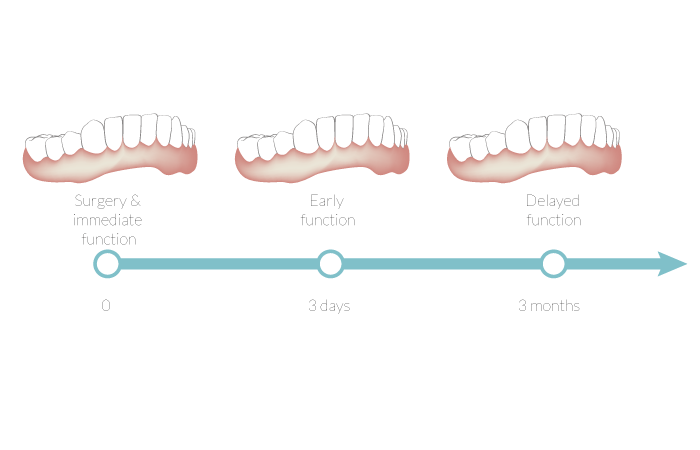
常规行使功能
与 Brånemark(普锐马克) 系统类似,传统骨内口腔种植体治疗方案在修复体植入前需要可变的愈合期(通常为 3-6 个月)。愈合期被认为是实现骨结合并建立负重接触面所必需的。传统方案称为“常规行使功能”,已经得到了非常好的长期临床效果。
早期行使功能
“早期行使功能”是指在种植体植入后 3 天到 3 个月的期间内进行修复体植入。与即刻行使功能和常规行使功能方案相比,这种方案实现了有文献记载的可比临床效果。
即刻行使功能
种植体植入后 3 天内开始负重的修复体负重方案称为“即刻行使功能”。与“延迟行使功能”文献相比,在骨质流失、修复失败或植入失败的不同背景下进行判断时,它可以得到大有前景、有案可查的临床效果。对患者的优点包括种植体植入到功能恢复的时间缩短、总体治疗时间缩短和不再需要佩戴临时活动修复体。
目前的经验表明,具有良好初期稳定性的口腔种植体是适合即刻行使功能的备选方案。初期稳定性一般通过外科医生的感觉或通过稳定性的替代指标(植入扭矩或共振频率分析 RFA)进行确定。如果没有良好的初期种植体稳定性,则不适合使用即刻行使功能方案。
虽然可以在许多治疗方案中考虑即刻行使功能,但如果植入多个种植体,并且即刻行使功能修复体将各个种植体“夹固”在一起,则会提高成功概率。这充分预示了可以对通过常规方式植入多个种植体以支撑临时和最终固定修复体的缺齿上颌和下颌使用即刻行使功能方案。
